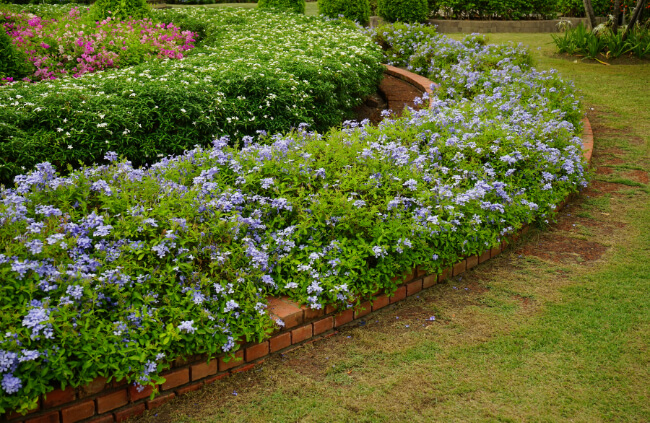Plumbago, otherwise known as leadwort, is a well-known flowering shrub in Australia. It is one of my wife’s favourite plants and I often get the question “Can we grow one of those in our garden?” to which I have refused point blank.
The reason: Plumbago just grows too BIG for most small gardens. However, if you enough space in your garden then read on.
More...
Getting to Know Plumbago Plants
Plumbago is the kind of plant that you would expect to find on your grandma’s farm. It will either be grown as a screen or hedging plant or dotted amongst large garden beds.
In that era of gardening, plants were handed down by cuttings from neighbours and ceremoniously plonked in a spare spot. Landscaping and garden design weren’t high on the agenda so it just became another filler shrub with pretty flowers.
Most suburban gardeners seem to have adopted a similar attitude and after a few years of healthy growth they find themselves with an enormous plant sprawling over their delicate flowering beauties.
When this happens, they either tear them out of the ground or remove every other plant to accommodate the spread. So, if you want to grow Plumbago you really need to have enough room to allow it’s rampant growth.

Plumbago auriculata Size
Plumbago auriculata, probably the most common species, will grow at least 3m (10ft) high and the same, if not more, wide. As you can see, it’s not a plant that you want to grow in between a couple of rose bushes.
Yet, while its size is a little daunting, if you have the room then it is one of the best plants to have growing in your garden. It’s drought-tolerant. It will easily put up with poor soil and it doesn’t need to be pruned each year.
Plus, it flowers profusely from early spring through late autumn. What more could you want in a plant However, it does appreciate the warmth and won’t tolerate the frost. Originating from South Africa, the Plumbago enjoys warm to tropical climates and grows well along the coast.
How to Propagate Plumbago
Propagating plumbago is just as easy as growing it. It can either be cultivated by germinating seed collected in autumn or via softwood cuttings during the growing season.
Published on June 6, 2023 by Nathan Schwartz
Last Updated on February 8, 2024




